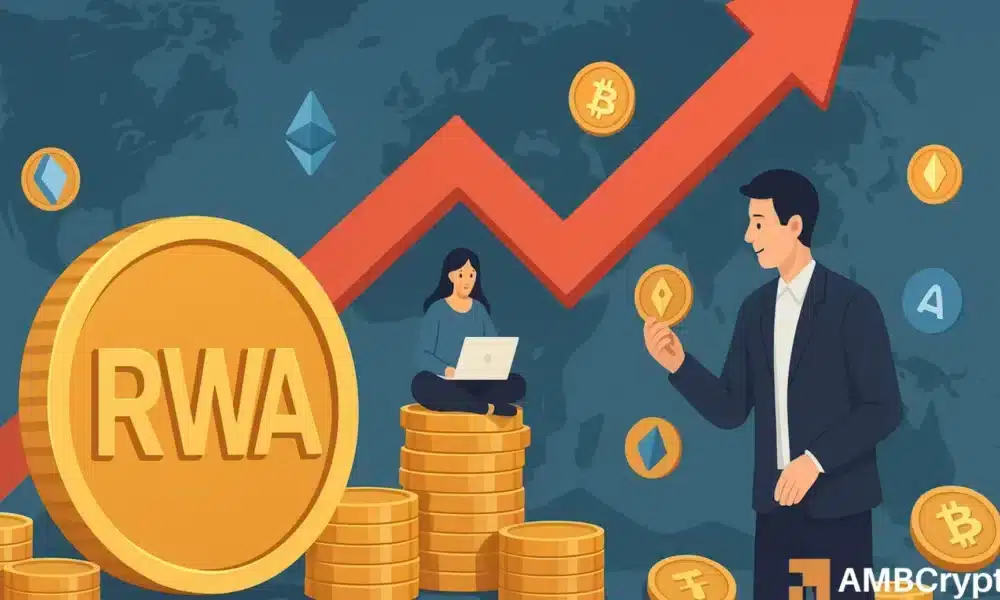The Surge of Tokenized Real-World Assets: A Transformative Shift in Finance
The landscape of finance is witnessing a revolutionary shift as the tokenization of real-world assets (RWAs) gains traction, reaching unprecedented figures. With the RWA market recently hitting an all-time high of $26.5 billion, representing a remarkable 70% increase since the beginning of the year, it’s clear that this burgeoning sector is driving significant change. Industry experts are optimistic about the potential of RWAs, projecting that the tokenization market could encompass trillions of dollars in traditional financial assets across various blockchain networks. This growth underscores the much larger $400 trillion addressable market within traditional finance (TradFi), highlighting the remarkable runway ahead for RWA tokenization.
Explosive Growth in Tokenized RWAs
Despite the impressive surge to $26.5 billion, the RWA market still accounts for just a fraction of the $400 trillion TradFi market. Much of the tokenized assets are currently found in private credit, treasury securities, commodities, stocks, and global bonds. Researchers Andrew Ho and Ming Ruan from Animoca Brands emphasize that the long-term growth will largely benefit asset managers who develop comprehensive platforms capable of managing the entire asset lifecycle—from issuance and settlement to secondary trading. This presents a unique opportunity for visionary firms to create robust infrastructures that streamline the process, enhancing efficiency and accessibility in the market.
The Role of Stablecoins in RWA Tokenization
Stablecoins are increasingly becoming the backbone of RWA tokenization, enabling seamless transactions and enhancing liquidity. Major players like Circle and Tether are at the forefront of this movement, with Circle leveraging its $USDC stablecoin to operate its Arc Layer-1 blockchain and Tether using $USDT for its Stable Layer-1. The integration of these stablecoins into the infrastructure is critical to managing institutional flows effectively. Furthermore, partnerships with firms such as Corpay, Fiserv, and Binance bolster the ongoing integration of real-world assets onto the blockchain, further solidifying the importance of stablecoins in this evolving landscape.
Ethereum’s Dominance in the Ecosystem
Ethereum continues to reign supreme in the RWA tokenization arena, capturing an impressive 55% of the market share with approximately $156 billion in on-chain value. This figure rises to 76% when inclusive of layer-2 solutions like ZKsync Era, Polygon, and Arbitrum. Experts attribute this dominance to Ethereum’s robust security, deep liquidity, and a vibrant ecosystem of developers and decentralized finance (DeFi) applications. As the appetite for tokenized RWAs increases, the growth of crypto-native tools and platforms is anticipated, further strengthening Ethereum’s pivotal role in shaping the future of RWA tokenization.
Multichain Ecosystem and Emerging Competitors
While Ethereum leads, the RWA tokenization sector is gradually evolving into a multichain ecosystem, welcoming competition from high-performance blockchain platforms. Emerging initiatives, such as Animoca Brands’ NUVA marketplace, signify the dynamic nature of this industry as new players enter the arena. Recent gains spurred by projects like Stellar (XLM), Injective (INJ), and Keeta (KTA) illustrate the upward momentum driving the sector. This diversification could potentially enrich the RWA landscape, benefiting users by providing greater choice, flexibility, and innovative solutions for tokenization.
The Future of Tokenized RWAs
As the RWA tokenization market continues to mature, its potential to revolutionize traditional financial systems becomes increasingly apparent. The visibility and adoption of tokenized assets are poised to rise, attracting even more interest from institutional and retail investors alike. Furthermore, ongoing advancements in blockchain technology and scalability solutions will likely drive the evolution of RWA infrastructures, making them more accessible and efficient. The path ahead is filled with opportunities for growth and innovation, as the financial world embraces the capabilities of blockchain to redefine asset ownership and trading.
Conclusion: A Promising Outlook
In conclusion, the tokenization of real-world assets presents an exciting frontier in finance, characterized by rapid growth and increased adoption. With Ethereum at the helm, supported by the integral role of stablecoins, the landscape is evolving into a multichain ecosystem filled with potential. As more players enter the market and existing frameworks are refined, the future appears bright for tokenized RWAs. For investors and analysts alike, understanding these developments will be crucial in navigating this transformative shift in the ever-changing world of finance.


